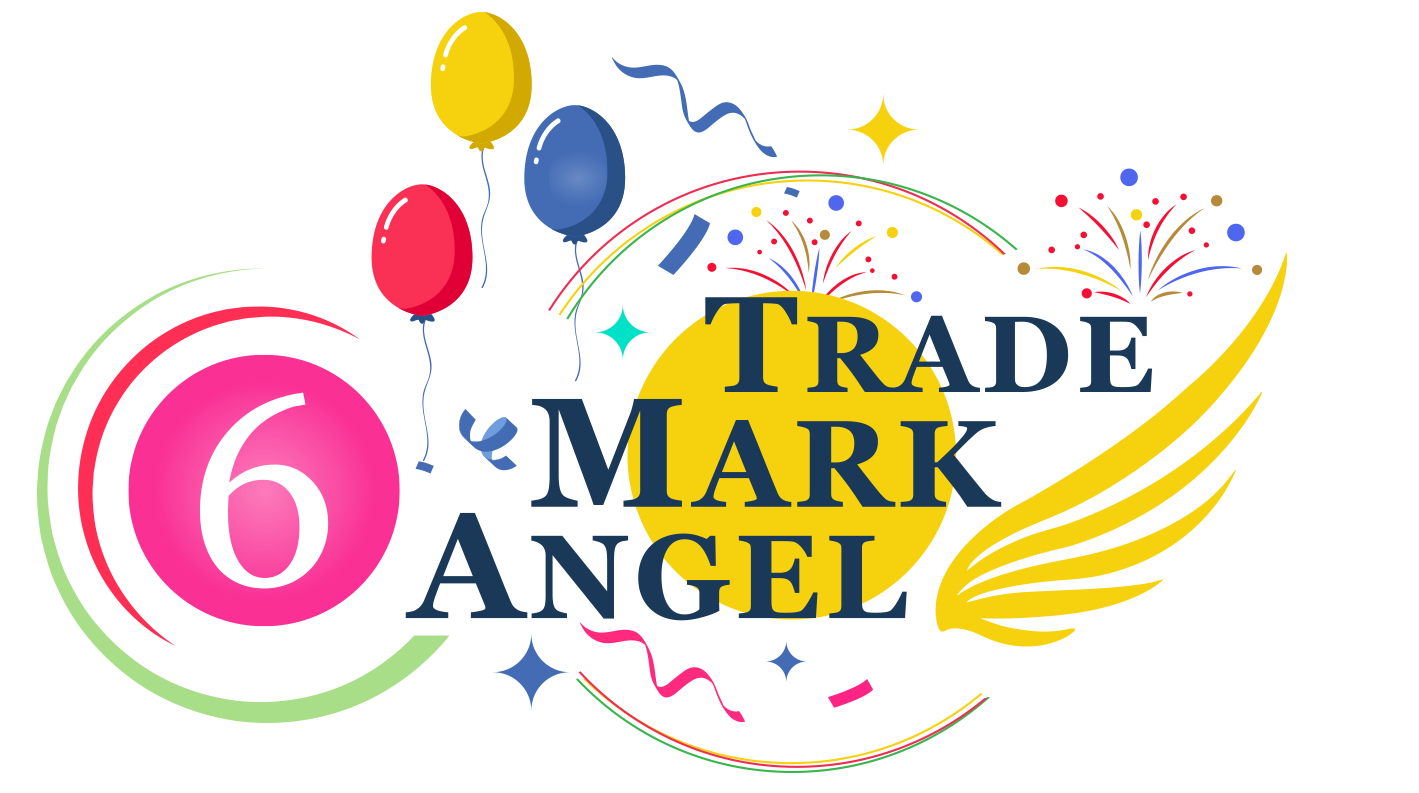Benefits of Trademark Registration: USPTO (U.S. Patent and Trademark Office) defines a trademark as a word, name, or symbol that identifies and distinguishes a brand’s products from others.
Similarly, a trademark, according to CIPO (Canadian Intellectual Property Office), is a sign or combination of signs used or proposed to be used by a person to distinguish their goods or services from those of others.
A trademark, therefore, is a crucial branding element of a company as it significantly affects a business’ reputation. For one, it allows a company to accumulate significant goodwill over time. The best examples include Google, Apple, and McDonald’s.
What are Trademark Rights?
Many sellers use trademarks in eCommerce. This automatically causes trademark rights to arise. These rights apply to the sales of goods and services by a particular seller. Trademark rights are granted to the seller after fulfilling specific requirements. This ensures that the seller’s trademark cannot be adopted or used by anyone else in his geographic area.
The question is: since these rights automatically arise, why are there additional steps needed to be taken to register your trademark?
Let’s take the matter to its correct context. Trademark rights are granted to a seller after fulfilling specific requirements. This ensures that the seller’s trademark cannot be adopted or used by anyone else in his geographic area.
Benefits of Trademark Registration: Trademark registration is of utmost importance in the current age of the internet. As such, the registration process enhances the value of the registered company’s brand.
It offers the registrant-seller greater rights and protection as compared to an unregistered seller. In a more legal setting, a brand that has an active registration is easy to enforce.
How Does Trademark Registration Add to a Brand’s Value?
Companies with trademark registration get to enjoy various benefits. These benefits are not available to an unregistered brand. Let’s discuss some of the benefits of trademark registration:
1. Exclusive Rights Over the Trademark Usage:
A trademark registration gives the brand owner the exclusive rights to use the mark in his registration country. A company’s trademark can be used for ten years in the country it has been registered in. In Canada and the US, you need to get your registration renewed every ten years. The policy is the same for jurisdictions like the EU, UK, Australia, Germany, Mexico, China, etc.
An unregistered trademark can only be used within a confined geographic area. The owners cannot establish goodwill and reputation beyond that particular region. Therefore, brands who want to scale up their business with time go for trademark registration.
2. Countrywide Priority:
Trademark registered brands get nationwide priority. They use their trademark to get recognized all across the nation. Trademark registration ensures that any other company does not use a registered brand’s mark all across the country.
On the other hand, an unregistered trademark may prevent its mark within only a limited geographic region. Trademark registration is of utmost importance in the current age of the internet. Today, we come across multiple companies with similar names.
Trademark registration is essential for those sellers who aim to expand their business in the future. Exclusive nationwide brand name rights are far more useful than having rights limited to a particular area.
3. Adds to Your Brand’s Reputation:
If you want to make your brand one-of-its-kind, then you should consider getting your trademark registered. It is one of the most valuable assets for any company. It adds to the value of the associated brand.
If there is one thing you must remember among the information found in this article, that is: a trademark is a valuable asset for any company.
Common wisdom dictates that for those things we value, we protect. You protect your trademark by securing a registration for it.
Trademark is your business’ identity; it serves as the face of the company.
It allows consumers to identify your goods through the brand name, and helps the brand to establish its reputation in the market.
A registered trademark ensures that no other sellers get to use your mark to sell their products. In other words, it prevents another seller from using a confusingly similar mark.
The trademark owners can sell or license the trademark for money, thus a trademark can be an important tool how to make money. Check our article: Five Interesting Ways You Can Make Money with Trademarks.
Other Benefits of Trademark Registration
4. Reduction in Enforcement Costs:
Enforcing a trademark can be frustrating, economically and emotionally speaking. Fortunately, registering a trademark can reduce enforcement cost.
- Public Ownership Record
The Patent and Trademark Office in every country maintains a public record of the registrant’s trademark ownership. It has a public database of registration certificate registered brands own.
This record serves as a notice for potential infringers that the registrant owns the mark and only he has the right to use it nationwide. The public record ensures that no other seller gets to adopt a similar mark.
- Incontestable Status After a Specific Period
A registered trademark earns an incontestable status after a fixed period. In the US and Canada, this period is five (5) years. The trademark becomes incontestable after five years of registration. This ensures several aspects of the trademark cannot be challenged.
Incontestable status can be achieved if the registrant files a sworn statement to request a “super trademark,” or file a ”petition for incontestability.” This must be done at an appropriate time. It allows brand owners to do away with the hassle of proving their exclusive rights to the trademark.
When a trademark earns an “incontestable status,” it is generally immune from challenge. In simpler words, a third-party would have a difficult situation to cancel a registered trademark.
- Actions Against Confusingly Similar Marks
As a requirement, a trademark application to register must not resemble any prior-filed application or registration. As such, the system protects a prior filed or registered trademark from a similar junior mark. This serves as an additional protective layer for registered trademark sellers.
As soon as a trademark is registered, it attains a presumptive validity. What this means is that a challenger has the burden of proof to establish that a registered mark must be cancelled. Absent substantive evidence for cancellation, any legal challenge of any registered trademark is bound to fail.
5. Easier to Deal with Counterfeiters:

As a registrant, you can confidently send counterfeiters cease-and-desist letters to convince them to retract their infringing actions under the penalty of being sued for trademark infringement.
Securing a registered trademark, is a step to effectively guard your company’s reputation.
6. Protects Brands from Cyber-Squatters:
Trademark registrant sellers can participate in Trademark Clearinghouse. It is the main registered trademark data repository. The trademarks included in this record are either protected by treaty or statute or validated by the court.
This database serves as a source of information regarding trademarks for domain registries and registrars. It also enables registered sellers to apply for mark along with a new gTLD (Generic Top-Level Domain).
According to Canadian Trademark Registration policies, the registered brand is allowed to register for a corresponding ca. This means the registered eCommerce seller claims the domain name before it is made available to the public.
7. Obtain registration in Other Countries:
Trademark registration allows sellers to obtain registration in other countries as well.
You can get your brand identified internationally with an international Trademark protection; you can apply to register for the trademark in countries that are a part of “The Madrid Protocol” agreement.
Your first trademark is called the national trademark. You can extend its protection by filing an international application to any country-member of the agreement. An international application is dependent on its national trademark application or registration. Therefore, an international application must be identical in both the mark and the associated goods/or services.
8. Prevent the Importation of Infringing Products and may prevent export of infringing products (China):
Brands can prevent the importation of trademark infringing goods by filing registration with the customer service. This protects brands against the importation of infringing foreign products.
Sellers with the registered trademark can apply to record their trademarks with Customs and Border Protection in the U.S. and Canada.
Customs and border protection blocks imported goods which infringe upon a registered trademark. These goods are monitored, seized, and detained.
Benefits of Trademark Registration in China
In China a registered trademark can be recorded with the Customs agency and then any other goods bearing registered trademark name will not be allowed to leave China (cannot be exported). This can be devastating to Amazon sellers who source their products in China and fail to register their trademark there.
9. Used for online sales platforms:
Various online eCommerce platforms allow brands to police the products sold under the owner’s mark. Trademarked brands can control the availability of their products all across these eCommerce platforms.
Trademark owners can apply for Amazon brand Registry to gain more control over their items. It also makes it easy for them to find infringers or counterfeiters. Amazon Brand Registry Program provides brand owners access to brand analytics. The seller needs to get his brand mark registered to qualify for participation in the Brand Registry Program.
- Why should Amazon sellers get their trademark registered?
Benefits of Trademark Registration on Amazon:
Amazon sellers can get into the Amazon Brand Registry program by getting their trademark registered. According to the latest Amazon Brand Registry program requirements, a seller needs to have his trademark registered. By doing so, he will gain full control of his products and services.

- Proprietary text
- Image search
- IPR violation report based predictive automation
- Video content posting
- Increased control over product listings registered under the brand name
Amazon introduces this program to make it easier for the brands to manage listings without being hijacked. There are various benefits of getting your brand registered with the Amazon Brand Registry Program.
Some of them include managing better product images, titles, descriptions and eliminating matching errors with similar companies that occur when products are listed. It offers ease to list high volume products and services. It allows flagging counterfeiter items, which decreases your product’s visibility. You can also get such fake sellers removed from the platform.
Relationship Between Amazon Brand Registry and Trademark Registration:
Only the brands with registered trademarks can apply to participate in the Amazon Brand Registry program.
Nobody knows the needs of a business better than the business owner. You can make sure that your products and services remain competitive in the internet marketplace by participating in the Brand Registry Program. However, you require a registered trademark to avail those benefits.
10. Public notice:
The Trademark Office of each country will maintain a database of filed and registered trademarks. Most business owners will do trademark search (by checking Trademark Office database) before adopting trademark for their business.
Your registered trademark serves as public notice that its owner has exclusive right to use the mark in the country of registration. Trademark registration often keeps others away from using or filing a trademark that is the same or similar to a registered trademark.
11. Provides a ground for the opposition:
A registered trademark provides you with a ground for opposition. If you noticed that a 3rd party filed a similar trademark, most likely Trademark Office will refuse such registration. However, if not refused, you will be able to file an opposition to prevent a similar trademark from getting registered. Your own registered trademark will be a ground for opposition, i.e. you may state that the offender’s filed trademark is too close to your own registered trademark. As a result, it’s possible that the 3rd party’s similar trademark may be refused by the Trademark Opposition Board.
Conclusion
In this technology-driven world, the internet is the biggest marketplace. All across the globe, brands are putting their best foot forward to increase the visibility of their products. However, with more brands going online, the risk of counterfeiting is also increasing. Trademark registration is the best solution to get your brand identified among your target audience while effectively preventing others from unauthorized use of your brand.
It sets a brand apart from other sellers in the industry. If you are an Amazon seller, a registered trademark will help you enroll in the Amazon Brand Registry program. This will win you a competitive advantage over other sellers in the market.
Do not forget that the cost of NOT registering the trademark is really high and may actually lose you money in the long run. Trademark registration is the cheapest way to protect your most valuable asset – your brand!











Leave A Comment